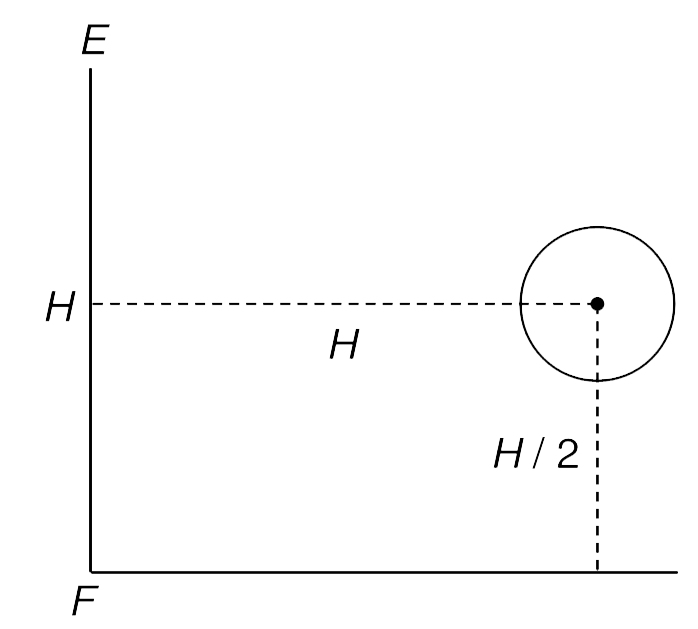In the last question, the electric field in vertical direction is switched off and a field of same strength(E0) is switched on in horizontal direction. Find the horizontal velocity of the ball during the nth collision. Also calculate the time interval between nth and (n+1)th collision
The correct Answer is:Vxn=qEm√2hg[1+2e(1−en−11−e)} and T=2en√2hg
Topper's Solved these Questions
Similar Questions
Two unequal masses, m1=2m and m2=m have unequal positive charge on them. They are suspended by two mass-less threads of unequal lengths from a common point such that, in equilibrium, both the masses are on same horizontal level. The angle between the two strings is θ=45∘ in this position. Find the Electrostatic force applied by m1 on m2 in this position.

View SolutionA short bar magnet having magnetic dipole moment M is moving along the axis of a fixed conducting (non magnetic) ring of radius R. The axis of the ring is along z direction.

(a) Write the z component of magnetic field due to the magnetic dipole at a point P in the plane of the ring, at the instant the magnet is at a distance z from the centre of the ring. Position of point P can be defined in terms of angle θ as shown.
(b) Write the magnetic flux through the ring due to the magnetic field produced by the magnet as a function of z.
(c) Write the magnitude of emf induced in the ring at the instant shown if speed of the magnet at the moment is v.
View SolutionIn the Figure FE is a man of height H standing on a floor. E is eye of the man and F is his foot. The distance between eye and the head is negligible. A steel ball of radius r is suspended in front of him. The distance of the ball from the man is H and height of the centre of the ball from the floor is H2. It is given that r<<H. The surface of the ball acts like a mirror and the man sees his image in it. Calculate the angle subtended by the image at the eye of the man.

View SolutionIf n^(th) term the AP 6,3,0,... is the same as the n^(th) term of the AP 2,0,-2..., find n.
View SolutionIf the n^(th) term of the A.P.9,7,5,... is same as the n^(th) term of the A.P.15,12,12,... find n.
View SolutionThere are nAM's between 1&31 such that 7th mean :(n−1)th mean=5:9, then find the value ofn
View SolutionA ball rolls off top of a staircase with a horizontal velocity u m s^-1 . If the steps are h metre high and b mere wide, the ball will just hit the edge of n th step. Find the value of n .
View SolutionA ball is let to fall frm a height h0. It makes 'n' collisions with the horizontal ground. If after 'n' collisions it rebounds with a velocity vn and the ball rises to a height hn, then the coefficient of restitution for the collision is
View SolutionA ball is dropped from a height h on a floor if the coefficient of restitution ise. Find the (a). Speed of ball after the first second … n^(th) collision. (b). Maximum height attained by the ball, after the first, second … n^(th) collision. (c). Time taken by the ball to reach the highest point after the first, second, ... n^(th) collision. (d). total distance covered by the ball. (e). totol time of journey.
View SolutionA charged ball with mass m and charge q is dropped from a height h over a non-conducting smooth horizontal plane. There exists a uniform electric field E0 in vertically downward direction and the coefficient of restitution between the ball and the plane is e. Find the maximum height attained by the ball after nth collision.
View SolutionIf the m^(th) term of a G.P is n and n^(th) term be m then find the (m+n)^(th) term
View SolutionDifference between nth and (n+1)th Bohr's radius of H atom is equal to it's (n−1)th Bohr's radius. The value of n is
View SolutionDifference between nth and (n+1)th Bohr's radius of H atom is equal to it's (n−1)th Bohr's radius. The value of n is
View SolutionIn an A.P. if m times the mth term is equal to n times the nth term then find (m+n)th term.
View SolutionIn an A.P. If m times the mth term is equal to n times the nth term, then find (mn)th term .
View Solution
